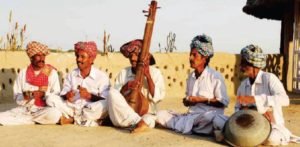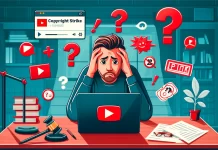The Bombay HC has recently gone on to admit a recent petition filed in lieu of the issue of subsistence of copyright in old traditional songs in various languages. As reported herein, a complaint had been filed in the form of an FIR at the Malad police station in Bombay where the complainant alleged that Pramod Surya (lyricist and song writer) and two publishers, Pukhraj Surya and Hiten Patel, had reproduced and copied certain songs already published by her in a book. The petitioners have moved to the Bombay High Court to quash this FIR. It has been stated before the court that the songs copied and published therein, are in furtherance of a compilation made by Pramod Surya, of old Marwari and Gujrati songs which are sung in marriage ceremonies. It has been pleaded that these songs, themselves, cannot be claimed to be copyrightable and are in the public domain, as they have been in existence since generations. The court has admitted the petition and will be deciding whether such compilations and reproductions of traditional songs are capable of copyright infringement and consequent criminal action.
THE PROTECTION OF TRADITIONAL MUSIC AND ANALOGY WITH FOLKLORE
The WIPO has clearly gone on to describe the concept of Traditional Cultural expressions and has used it synonymously with the phrase “expressions of folklore”. It has defined it to mean productions consisting of characteristic elements of the traditional artistic heritage developed and maintained by a community. These include verbal expressions such as folk tales, musical expressions such as folk songs and instrumental music. They have defined traditional as- not “old” but rather an expression based upon tradition or associated with an indigenous or traditional society (based on location or community beliefs) and practiced in traditional ways. The WIPO handbook on intellectual property (WIPO Publication No. 489 (E), 2004) clearly states:
2.273: Pre-existing traditional culture is generally trans-generational (that is, old), collectively “owned” by one or more groups or communities and is likely to be of anonymous origin, to the extent that the notion of authorship is relevant at all. Pre-existing traditional culture as such and particular expressions thereof are generally not protected by current copyright laws and are treated, from the perspective of the intellectual property system, as part of the “public domain.” This is the approach followed in the national laws of States such as Australia, Belgium, Canada, Colombia, the Czech Republic, Honduras, Italy, the Netherlands, Japan, Kyrgyzstan, the Republic of Korea, the Russian Federation and Viet Nam.
What however has been granted protection is a specific expression of the traditional cultural work, which has elements of originality or rather is an adaptation inculcating original elements within itself and an exercise of skill and judgment. The WIPO handbook further goes on to state that:
2.274: On the other hand, a contemporary literary and artistic production based upon, derived from or inspired by traditional culture that incorporates new elements or expression is a “new” work in respect of which there is generally a living and identifiable creator or creators. Such a contemporary production may include a new interpretation, arrangement, adaptation or collection of pre-existing cultural heritage and expressions in the public domain, or even their “re-packaging” in the form of digital enhancement, colorization and the like. Contemporary, tradition-based expressions and representations of traditional cultures are generally protected by existing copyright for which they are sufficiently “original.” The law makes no distinction based on “authenticity” or the identity of the author – that is, the originality requirement of copyright could be met by an author who is not a member of the relevant cultural community in which the tradition originated.
It has herein been recognized that Copyright is author-centric and, in case of traditional expressions, or one carried in a traditional way, an author at lease in a way in which the notion of “author” is conceived in the field of copyright, is absent. (WIPO 1997:5). Hence, such traditional elements of expression take a form of a general idea which cannot be monopolized due to the reason of continuous practice and a position in cultural heritage.
It has been very accurately argued by Anthony McCann of the Irish World Music Centre, University of Limerick, in his work “Traditional Music and Copyright: The Issues” that:
“(Traditional) implies the presence of a community economy, in which authorship is certainly not a central concern. The concept of public domain, in the sense of unlimited access to all who wish to participate in the community economy, is such a given – for newly composed material as well as for the musical heritage that has been passed down through the generations – that its use as a term would seem superfluous. Composers in traditional communities allow their material to be subsumed into the traditional participatory processes in return for the very participation that begot their efforts in the first place. This fluidity of musical practice across complexly layered communities makes intellectual property rights difficult to assign and equity hard to achieve.”
Hence, it can easily be inferred from the above-mentioned discussion that a copyright or a monopoly right to exploitation cannot be claimed over lyrics of a traditional song that has been published, due to it being a generic element of a society and hence a mere idea. However, particular compilations and expressions of the same, which denote an element of originality can be enough to fulfill a claim of copyright over that particular expression or compilation. Original adaptations and derivations are definitely protectable.
An analysis of the landmark case laws on the concept of originality in India and the accepted standard elsewhere reveal that, even though generic elements can themselves not been copyrighted, yet specificity and selectivity in arrangement which yield an original compilation is still copyrightable. The case of Eastern Book Company v. D.B.Modak (2008 1 SCC 1), following the Canadian case of CCH Canadian v. Law Society of Upper Canada (2004 1 SCR 339) had clearly established the adoption of the middle ground i.e. “Skill and Judgment” as the threshold of originality for copyright protection in India. The copyright protection is applicable on the “expressive whole” of the compilation and not the individual generic elements. (Atari Games v. Oman, 929 F.2d 242 (DC Cir 1992) [22]).
An analogy can be drawn to the factual scenario of the Delhi High Court case of Institute of Inner Studies v. Charlotte Anderson and ors., where it was held that simple dance steps or social routines cannot be copyrighted due to them being generic elements. However, if a specific and selective compilation has been entered involving those individual general steps, a copyright claim can sustain. This compilation although, cannot be a merely mechanical exercise and needs to involve certain selectivity and exercise of judgment in order to be protectable, under the applicable threshold of originality (Construction Denis v. Yves Jenson 2010 QCCA 1287).
Ergo, the court in the case at hand, needs to analyze the work wherein copyright is being claimed and examine whether, there are elements in the work which go beyond being traditional and generic, and fulfill the threshold of originality. Otherwise, a claim of copyright on an expression of a traditional song merely lyrically written, should ideally not be sustainable and there would be no infringement.
VERSIONS
A copyright, although, can subsist in certain versions of the traditional song, which embark certain traits of originality and involve substantial skill and judgment. For example, there can primarily be no copyright on the song “Kesariya Balam” which is a Rajasthani Folk song, however, a version of the same with distinct and original compositional elements can definitely be protectable by copyright. Hence, if a distinct version of the traditional song, is recorded and reproduced in an un authorized manner, there can be a claim of copyright infringement. Although, merely a claim on the lyrics which are generic and traditional in nature cannot be held to be protectable by law. Another important thing, which needs to be established here is that in India, copyright subsists for a period of 60 years + the lifetime of the author, since the work is published according to section 22 of the Copyright Act. Hence, if the author of a traditional song is identifiable (which is in fact somewhat contradictory to the meaning of traditional), copyright shall still subsist for that duration.
Image source: here


















![BREAKING: GOVERNMENT PROPOSES TO AMEND THE COPYRIGHT RULES, 2013 SEEKS TO BRING ALL MODES OF BROADCAST WITHIN THE AMBIT OF STATUTORY LICENSING PROVISIONS [READ DRAFT RULES]](https://iprmentlaw.com/wp-content/uploads/2019/06/copyright-question-mark-100x70.png)